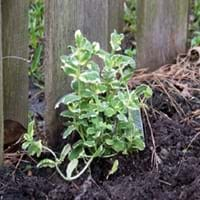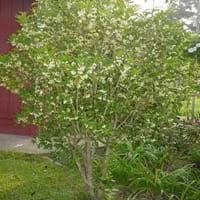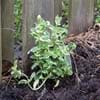Life Span
Perennial
Perennial
Type
Herbs
Broadleaf Evergreen
Origin
Southern Europe
Asia, Nepal, China, Japan, Korea
Types
Not Available
Apricot Gold, Butter Yellow, Orange Supreme, Dan
Habitat
Cultivated Beds, Dappled Shade, Shady Edge, Sunny Edge, Woodland Garden
Dappled Shade, Woodland Garden Canopy
USDA Hardiness Zone
6-9
6-11
Sunset Zone
4, 5, 6, 7, 8, 9, 10, 11, 12, 13, 14, 16, 17, 18, 19, 20, 21, 22, 23, 24
21,22
Habit
Spreading
Upright/Erect
Minimum Width
Not Available
Flower Color
White, Pink
White, Orange
Flower Color Modifier
Bicolor
Bicolor
Fruit Color
Brown
Blue, Black
Leaf Color in Spring
White, Light Green
Green, Dark Green
Leaf Color in Summer
White, Light Green
Dark Green
Leaf Color in Fall
White, Light Green
Dark Green
Leaf Color in Winter
Light Green
Dark Green
Leaf Shape
Oval
Oval, Finely Dentate
Plant Season
Spring, Summer, Fall
Spring, Summer, Fall, Winter
Sunlight
Partial Sun, Partial shade
Full Sun, Partial Sun, Partial shade
Type of Soil
Clay, Loam, Sand
Clay, Loam, Sand
The pH of Soil
Acidic, Neutral
Acidic, Neutral
Soil Drainage
Poorly Drained
Well drained
Bloom Time
Summer
Spring, Late Spring, Early Fall, Fall
Tolerances
Drought
Not Available
Where to Plant?
Container, Ground, Pot
Container, Ground, Pot
How to Plant?
By dividing rhizomes, tubers, Stem Cutting
Semi-hardwood cuttings
Plant Maintenance
Medium
Medium
Watering Requirements
Average Water Needs, Do Not over Water, Requires regular watering
Average Water Needs
In Summer
Lots of watering
Lots of watering
In Spring
Moderate
Moderate
In Winter
Average Water
Average Water
Soil pH
Acidic, Neutral
Acidic, Neutral
Soil Type
Clay, Loam, Sand
Clay, Loam, Sand
Soil Drainage Capacity
Poorly Drained
Well drained
Sun Exposure
Partial Sun, Partial shade
Full Sun, Partial Sun, Partial shade
Pruning
Prune in the growing season, Remove damaged leaves, Remove dead branches, Remove dead leaves
Remove no more than one-third of each branch
Fertilizers
All-Purpose Liquid Fertilizer, Fertilize in early spring
All-purpose dry fertilizer
Pests and Diseases
Red blotch
No serious insect or disease problems
Plant Tolerance
Drought
Drought
Flower Petal Number
Single
Single
Fragrant Bark/Stem
Yes
No
Foliage Texture
Medium
Medium
Foliage Sheen
Matte
Glossy
Attracts
Bees, Butterflies, pollinators
Nematodes
Allergy
Itchiness, Skin rash, Stomach pain, Swelling
no allergic reactions
Aesthetic Uses
Bonsai, Showy Purposes
Beautification, Showy Purposes
Beauty Benefits
Good for skin
Good for skin and hair
Environmental Uses
Air purification
Air purification
Medicinal Uses
Antiseptic, Digestive disorders, Fever, Headache
Antitussive
Part of Plant Used
Fruits, Leaves
Bark, Flowers, Fruits, Stem
Other Uses
Added to salads, Used as essential oil, Used in making tea, Used to make herbal teas
Used as essential oil, Used as insect repellent, Used in herbal medicines, Used in tea, wine and sweet dishes
Used As Indoor Plant
Yes
Yes
Used As Outdoor Plant
Yes
Yes
Garden Design
Bog Garden, Edible, Groundcover, Herb / Vegetable
Container, Feature Plant, Hedges, Houseplant, Mixed Border, Screening, Wind Break, Topiary, Bonsai, Espalier
Botanical Name
MENTHA suaveolens 'Variegata'
OSMANTHUS fragrans
Common Name
Applemint, Variegated Applemint
Sweet olive, Sweet osmanthus, Tea olive
In Hindi
Applemint Tree
Sweet Olive
In German
Applemint Baum
Sweet Olive
In French
Applemint Arbre
Olive douce
In Spanish
Árbol Applemint
Oliva dulce
In Greek
Applemint Δέντρο
γλυκό Ελιά
In Portuguese
Árvore applemint
Olive doce
In Polish
Applemint Drzewo
słodki Olive
In Latin
Applemint ligno
Dulce Olive
Phylum
Magnoliophyta
Magnoliophyta
Class
Magnoliopsida
Magnoliopsida
Order
Lamiales
Scrophulariales
Family
Lamiaceae
Oleaceae
Clade
Angiosperms, Asterids, Eudicots
Angiosperms, Asterids, Eudicots
Subfamily
Faboideae
Not Available
Number of Species
Not Available
Importance of Applemint and Sweet Olive
Want to have the most appropriate plant for your garden? You might want to know the importance of Applemint and Sweet Olive. Basically, these two plants vary in many aspects. Compare Applemint and Sweet Olive as they differ in many characteristics such as their life, care, benefits, facts, etc. Every gardener must at least have the slightest clue about the plants he wants to plant in his garden. Compare their benefits, which differ in many ways like facts and uses. The medicinal use of Applemint is Antiseptic, Digestive disorders, Fever and Headache whereas of Sweet Olive is Antitussive. Applemint has beauty benefits as follows: Good for skin while Sweet Olive has beauty benefits as follows: Good for skin.
Compare Facts of Applemint vs Sweet Olive
How to choose the best garden plant for your garden depending upon its facts? Here garden plant comparison will help you to solve this query. Compare the facts of Applemint vs Sweet Olive and know which one to choose. As garden plants have benefits and other uses, allergy is also a major drawback of plants for some people. Allergic reactions of Applemint are Itchiness, Skin rash, Stomach pain and Swelling whereas of Sweet Olive have no allergic reactions respectively. Having a fruit bearing plant in your garden can be a plus point of your garden. Applemint has no showy fruits and Sweet Olive has no showy fruits. Also Applemint is flowering and Sweet Olive is not flowering . You can compare Applemint and Sweet Olive facts and facts of other plants too.





